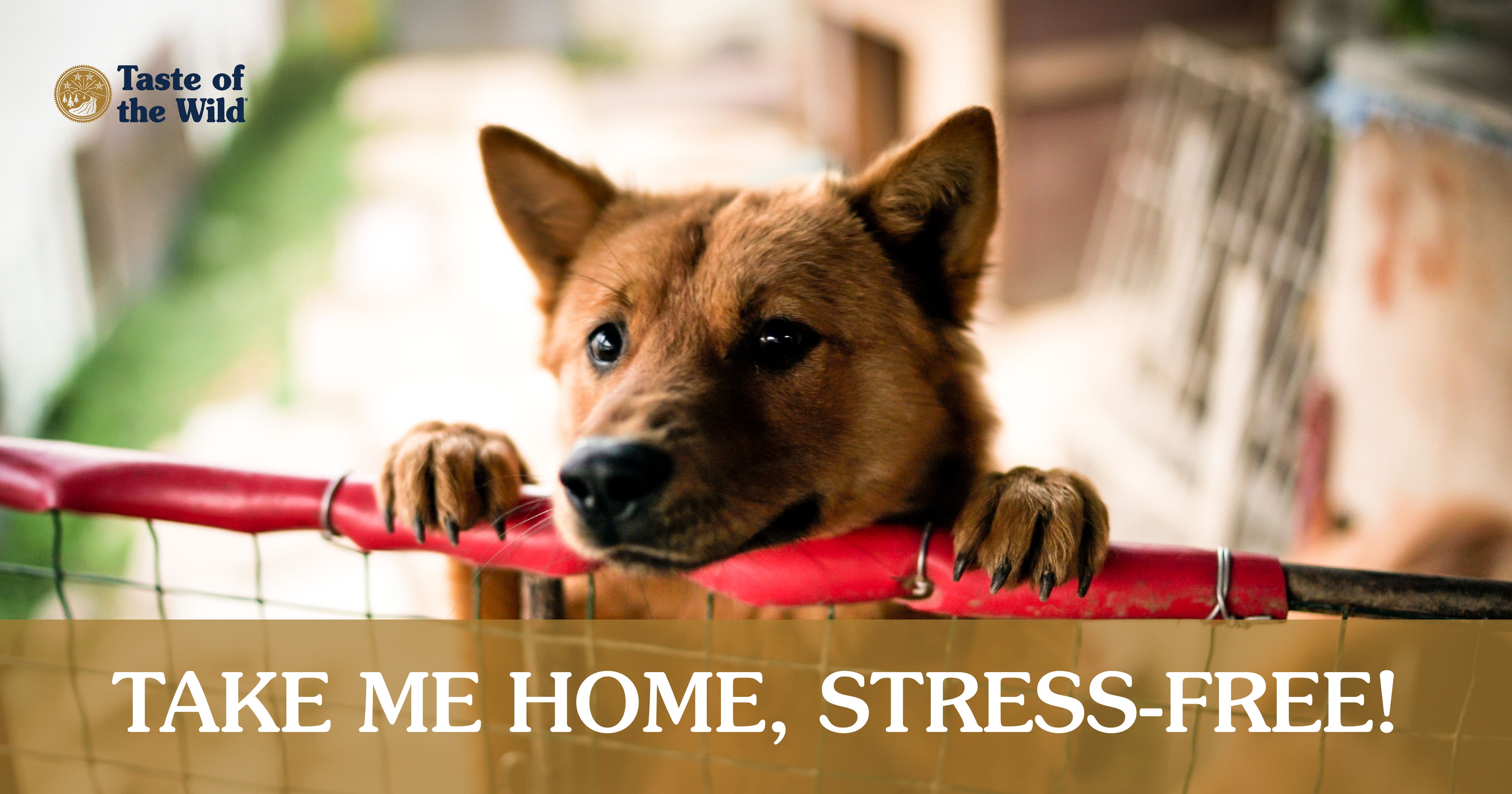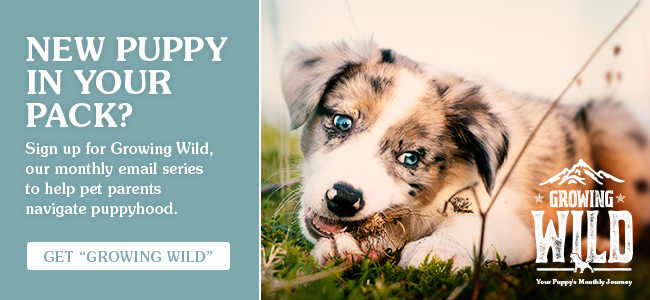
Adopting a puppy can be an exciting time! You’ve picked out their name. You’ve got their food bowl and water dish all set up. You’ve told the family to expect a furry addition. It’s a magical time. But it’s not without stress, especially for the puppy. And new puppy stress isn’t fun for anyone!
While your bundle of fur is excited, too, they’re going through something entirely new and life-changing — and those changes may cause stress and anxiety. What can you do to help keep your new puppy stress free so they can stay calm and truly enjoy the blessing that is adoption? PAWS right there…We’ve got you with some simple tips for de-stressing the adoption process for your puppy.
Request Time Off
Consider taking a day or two off work to help acclimate your pupper to their new home. This may be the first time your puppy has been away from their siblings and their mom. It’s a lot less scary when they’re not navigating a new situation all on their own. The more time their primary caregiver can spend with them, the easier the transition will be.
Also, don’t plan much activity for those first two days. You’ll want those first two days to be focused on giving your new puppy the time and space they need to acclimate to their new surroundings.
Set Up a Safe Haven to Reduce New Puppy Stress
Shopping for puppy toys, bowls and crates or fluffy beds can be quite the fun adventure! When you get everything picked up or delivered, be sure to set it all up and have it ready for their arrival. Fido will feel at ease knowing they have a designated space for eating, sleeping and playing.
Next, don’t forget to puppy-proof your place. Shoes, clothes, floor plants and/or kid toys should all be placed out of reach. Tablecloths, towels and any other low-hanging items should be secured. Wrap or hide cables and electrical cords so your puppy doesn’t chew through them. And lastly, look around your entire house with this question in mind, “Can a puppy hide or get trapped in this spot?” Cover any spots or move any furniture that could be dangerous to your puppy while they are learning the house rules.
Create a Schedule and Ground Rules
If you’re not the only one raising baby Fido, create a schedule and ground rules with everyone on board. Puppies need structure and consistency to feel safe and secure. You’ll want to outline where the puppy will go potty, where they will sleep, and what times they will be fed and walked. With room for flexibility, of course!
If you have kiddos at home who have never handled a puppy, use a stuffed toy to demonstrate how to hold a puppy and ways to play with them. Explain how they will also need to give the puppy space to get used to their new surroundings.
Let Them Slowly Get Acclimated Indoors
The first few hours of your puppy’s arrival can be the most stressful time. New home, new people, new experiences; it’s a lot to handle! It’s best to calm those pesky nerves with fewer people present and a controlled environment. If you can, keep other animals outside or in a separate room. If you have young children, try to choose a time to bring the puppy home when they are with a sitter or at daycare.
Next show baby Fido where their crate, food dish and water bowl are located. Your puppy may be hungry right away or they may need a nap. Be prepared to go with the flow to avoid new puppy stress. Over the next couple of days, your puppy will explore the rest of the house. Continue to let them wander at their own pace, and they’ll quite literally make themselves at home!
Introduce Everyone
After your puppy has been at home for a few hours, slowly introduce them to their new human housemates. While everyone may have an urge to pick up the puppy and hold them, encourage everyone to sit on the floor and let Fido come to them. This will help your puppy not feel smothered or overwhelmed meeting so many new faces at once.
Try holding off on introducing other animals until day two or three. Then have another adult handy so you can each hold onto each animal’s leash. Bring in one animal at a time for your puppy to meet. Watch both animals’ body language. As soon as you see signs of aggression (i.e., baring teeth, raised hair on the back of neck, etc.) separate the animals. Give them time to cool off and try introducing them again later. It may take time for your other pets to warm up to the newest addition — and that’s OK.
Do Not Scold Your New Puppy
As your puppy gets into things they shouldn’t or nibbles a bit too hard, resist the urge to scold them. They’re still learning the rules, after all. Instead, try a deep, moderately loud “no” just once and redirect their attention to a new toy. Consistency and patience will be needed to help set boundaries in a stress-free environment.
Make Bedtime the Best Time for Your New Puppy
A crate is an essential tool in keeping your puppy safe and secure overnight. It keeps them out of trouble and provides a home within your home: their very own safe space.
For the first couple of weeks, you’ll want to keep their crate in the same room you’re sleeping in. Those first few nights especially, they’ll be looking around for their mother or siblings. Seeing you as a new friendly face can help calm these separation woes.
In addition to putting their crate next to your bed, try giving them a snuggle puppy toy with a heat pack or a hot water bottle wrapped in a hand towel. Heat has been proven to comfort puppies in this transition.
Over the next few weeks, you’ll notice your new puppy will gradually become more comfortable in their furever home. Hoorah!
If anything seems worrisome during this transition, don’t hesitate to give your local veterinarian a call. They’re there to help in this exciting time, too!
RELATED POST: What You Need to Know to Get Puppies Through Their First Summer
The information in this blog has been developed with our veterinarian and is designed to help educate pet parents. If you have questions or concerns about your pet's health or nutrition, please talk with your veterinarian.

